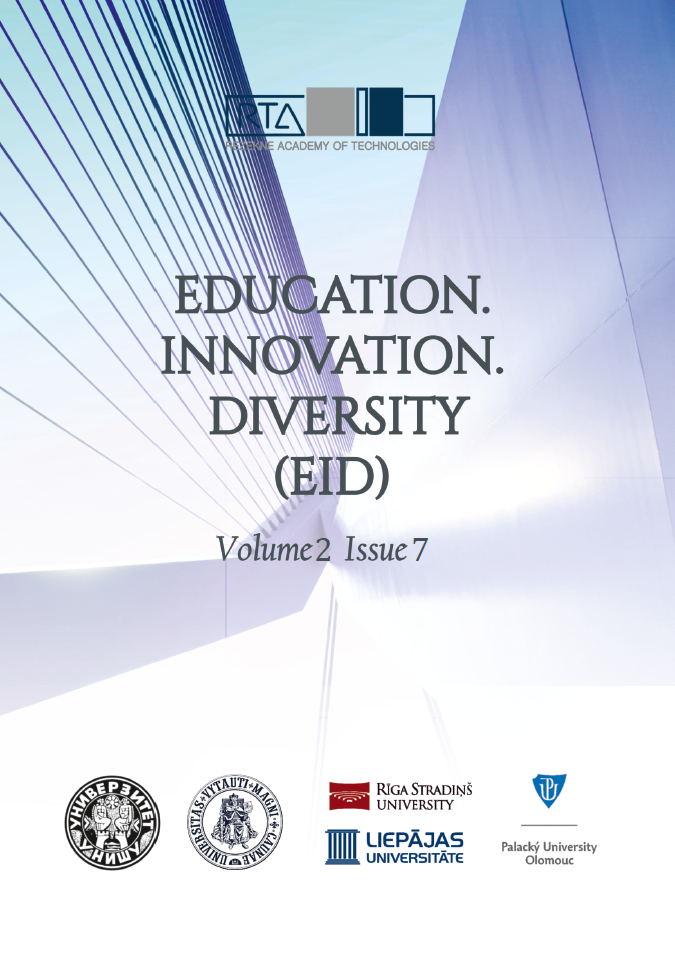SIGN LANGUAGE OF THE DEAF PEOPLE: A STUDY ON PUBLIC UNDERSTANDING
DOI:
https://doi.org/10.17770/eid2023.2.7356Keywords:
communication, interpreter, knowledge, sign language of the deaf, societyAbstract
Today, when various regulatory documents support sign language research, there is a lack of both teaching materials and research on deaf sign language and public understanding. The study aims to determine the public’s proficiency or competence in the Latvian sign language. The research revealed people’s basic knowledge of Latvian sign language grammar, their ability to communicate and understand deaf people, their attitudes and opinions about the process, and the necessity of learning sign language. Information was studied in four blocks of questions: society’s attitude towards deaf sign language, society’s knowledge of deaf sign language, communication skills with a deaf person, and opinion on the development of deaf sign language and its necessity. The sample of the study is 500 respondents, who represent the opinion of the population between the ages of 16 and 60, observing the socio-demographic parameters of the target group of the study. An empirical research method was used in the study; to collect data, an electronic survey was conducted. In general, the study confirms that society shows a positive attitude towards Latvian sign language as a means of communication for deaf people. At the same time, the data reveal poor knowledge of sign language and its grammar. It was concluded that not only sociological research is needed on public perceptions of deaf sign language, but also various educational events for the rest of society should be promoted, including seminars, courses, and conferences.
References
Bethere, D. (2023). Latviešu nedzirdīgo zīmju valoda starppersonu saziņā un pētniecībā. No I. Druvietes (atb. redaktore), Valodas prakse: vērojumi un ieteikumi, Nr. 18 (109–123). Rīga: LVA.
ES vadlīnijas nedzirdīgu cilvēku nediskriminācijai (vienlīdzībai) sabiedrībā (2006). Retrieved from: https://www.lns.lv/files/text/EUD_vadlinijas_latviski.pdf
Everets, D. (2022). Valoda – kultūras instruments. Rīga: Latviešu valodas aģentūra.
Par Valsts valodas politikas pamatnostādnēm 2021.–2027. gadam (2021). Retrieved from: https://likumi.lv/ta/id/325679-par-valsts-valodas-politikas-pamatnostadnem-2021-2027-gadam
Sign language interpreting in public service settings (1995). Retrieved from https://knowledge-centre-interpretation.education.ec.europa.eu/en/public-service-interpreting/sign-language-interpreting-public-service-settings
Valsts valodas likums (1999). Retrieved from: https://likumi.lv/ta/id/14740-valsts-valodas-likums
Zīmju valoda attīstās līdzi laikam (2021). Retrieved from https://www.lsm.lv/ raksts/zinas/latvija/zimju-valoda-attistas-lidzi-laikam-vai-valsts-so-attistibu-atbalsta.a422735/
World Federation of the Deaf (2016). Retrieved from http://wfdeaf.org/news/resources/legal-recognition-sign-languages-country/
Downloads
Published
Issue
Section
License
Copyright (c) 2023 Education. Innovation. Diversity.

This work is licensed under a Creative Commons Attribution 4.0 International License.






